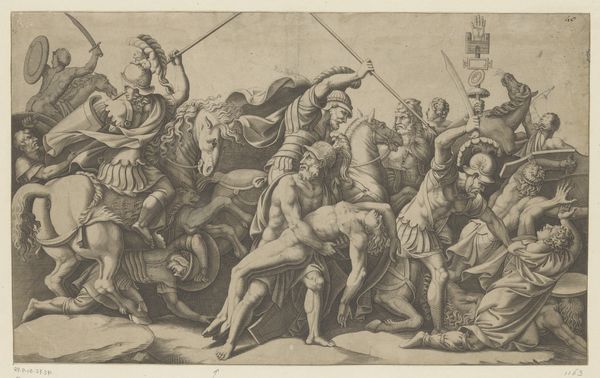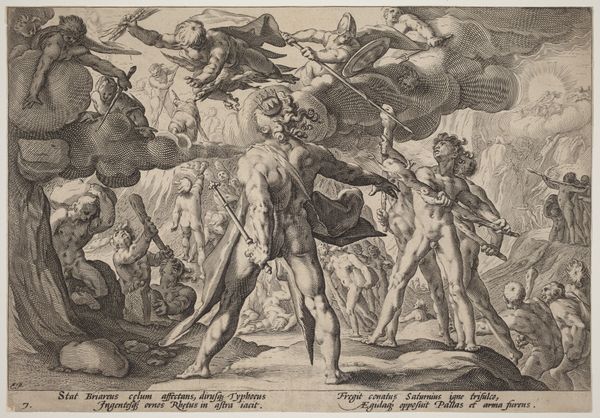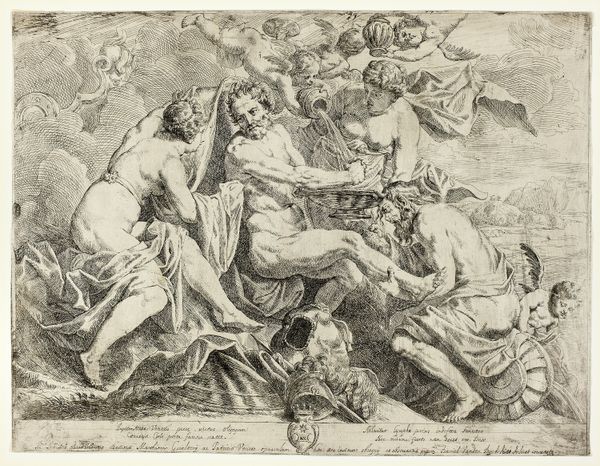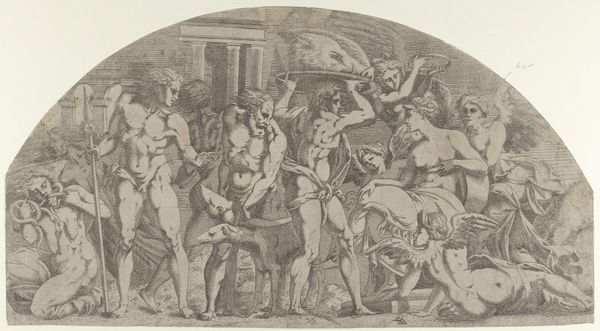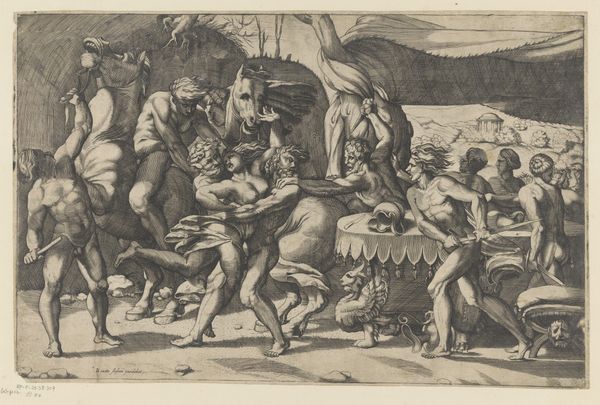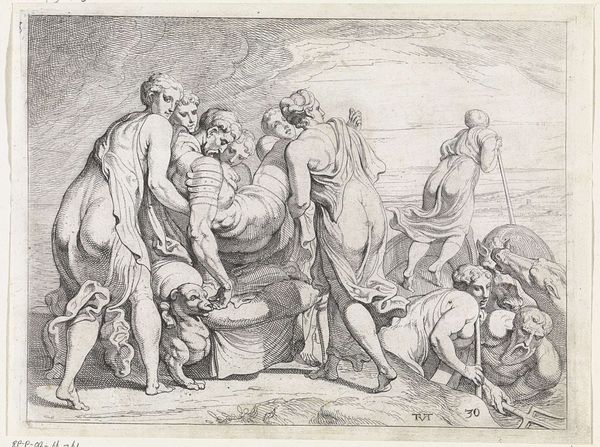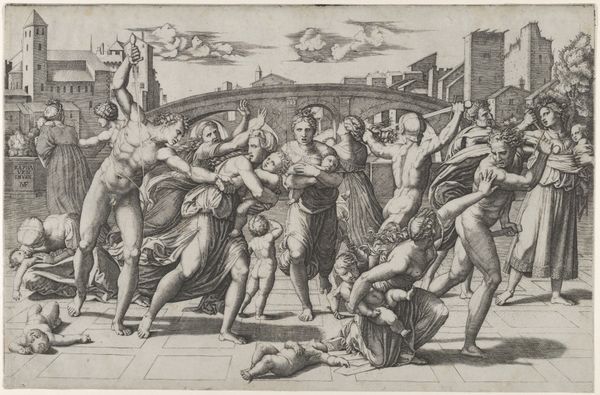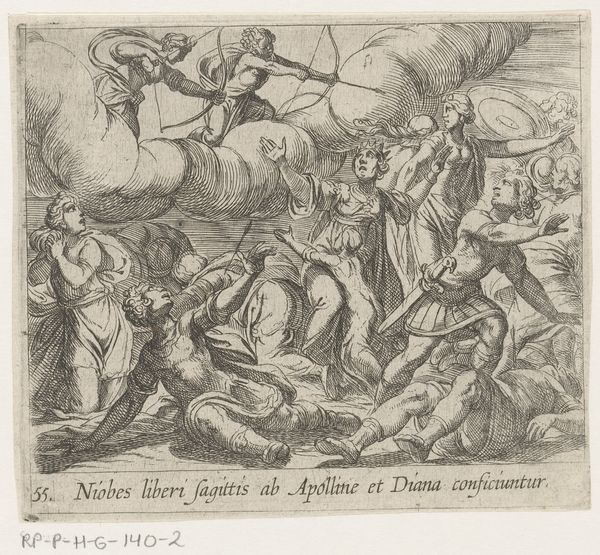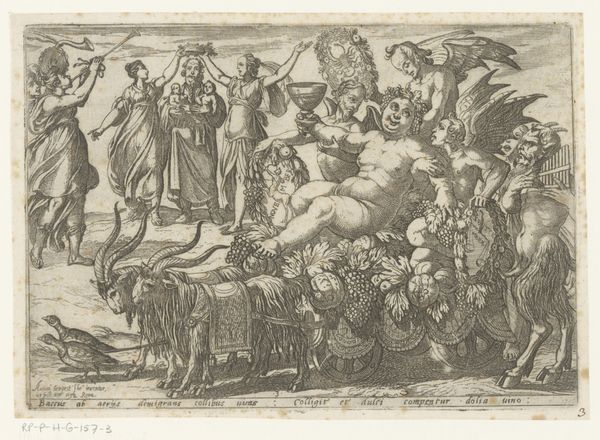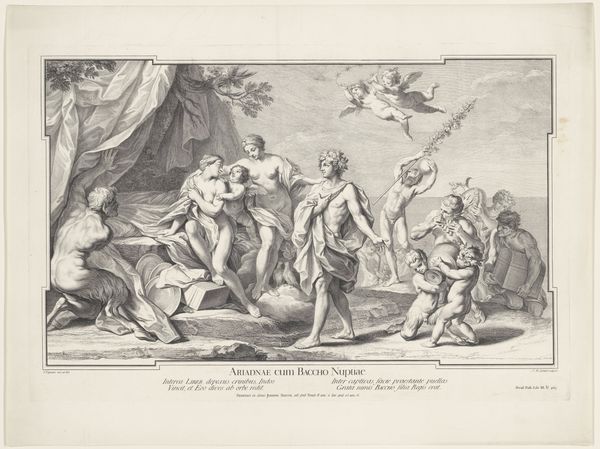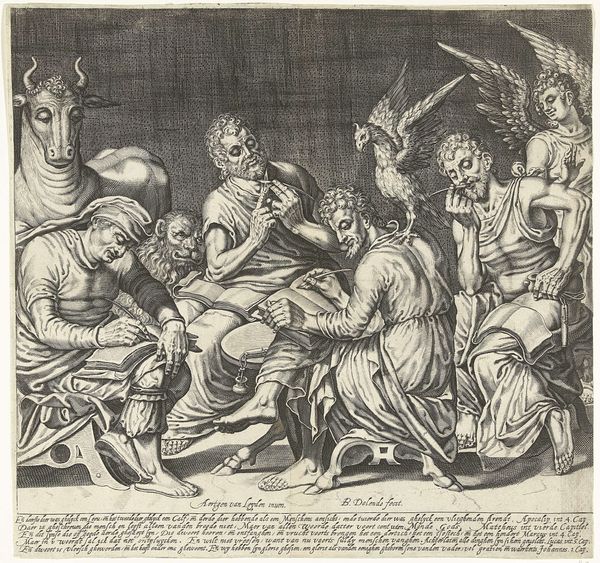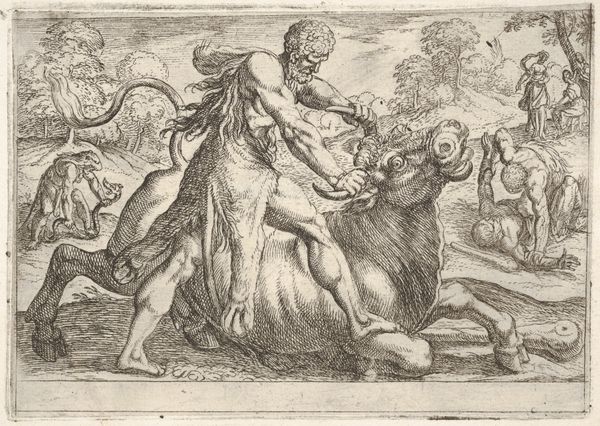
engraving
#
narrative-art
#
baroque
#
figuration
#
history-painting
#
engraving
Dimensions: height 243 mm, width 496 mm
Copyright: Rijks Museum: Open Domain
Editor: This engraving from 1663, "Grieken sleuren Cassandra uit de tempel" by Giuseppe Maria Mitelli, it's quite the scene. I'm immediately struck by the violence. What do you see in this piece? Curator: Well, beyond the immediate violence, I see a commentary on power and its abuse, played out within a very specific socio-political context. Consider the time this was made. The Baroque period, with its emphasis on drama and heightened emotion, certainly shaped the visual representation of the scene. But more than that, we must ask how Mitelli’s work might function as a piece of visual rhetoric? Editor: Visual rhetoric? Can you explain more? Curator: Think about the intended audience. Prints like these were often disseminated widely, carrying not just aesthetic value, but also political and moral messages. The image presents the Greeks' actions as brutal sacrilege. And this imagery functions within existing political structures: it reflects ideas about heroism, victimization, and justifiable use of force and who can challenge such narratives? Editor: So you're saying it's not just about depicting a scene from mythology, but also about shaping public perception? Curator: Precisely! It uses the weight of classical history to comment on contemporary issues, maybe even subtly critiquing existing power structures or solidifying specific ideologies within its contemporary context. It encourages its viewers to internalize existing political conditions, don’t you think? Editor: I see your point! It definitely makes me think about the power of images to shape opinions. I learned how images can become cultural arguments through this. Thanks for sharing your thoughts! Curator: And I think reflecting on its original context highlights how interpretations shift across time, influenced by our own present.
Comments
No comments
Be the first to comment and join the conversation on the ultimate creative platform.
